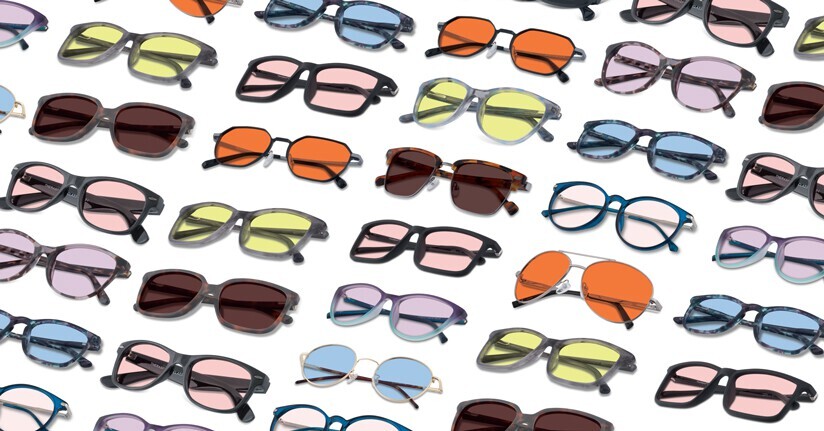Conditions That Cause Photophobia
The following conditions are medically recognized as having photophobia as a symptom. Someone with one of these conditions could find light to be too bright or painful or both. The pain might be felt in the eye itself or it could exacerbate pain elsewhere (like in the case of migraine, where light can worsen the existing head pain).
Someone with one of these conditions could be sensitive to all light sources, natural and artificial, or only be sensitive to fluorescent lighting. Not included are conditions for which patients report sensitivity to fluorescent light only -- that’s a list for another day.
- Achromatopsia
- Agoraphobia
- Albinism
- Alström syndrome
- Aniridia
- Ankylosing Spondylitis
- Anxiety
- Asthenopia
- Autism spectrum disorders
- Bietti corneoretinal dystrophy
- Bilateral acute iris transillumination defects of the iris
- Blepharitis
- Blepharospasm
- Buphthalmos
- Chiari Malformation
- Chronic fatigue syndrome (myalgic encephalomyelitis)
- Cogan’s syndrome
- Concussion
- Cone dystrophy
- Corneal diseases
- Corneal neuropathy
- Cortical visual impairment
- Crystalline keratopathy
- Cystinosis
- Depression
- Dry eye
- Fibromyalgia
- Glaucoma
- Grave’s orbitopathy
- Hypophysitis
- IFAP syndrome (ichthyosis follicularis with alopecia and photophobia)
- Inflammatory bowel disease
- Interstitial keratitis
- Iritis
- Keratoconjunctivitis
- Lyme disease, lyme meningitis
- Magnesium deficiency (acrodynia)
- Measles
- Meningeal irritation
- Meningitis
- Mercury poisoning (acrodynia)
- Migraine
- Multiple Sclerosis
- Neurasthenia
- Occipital lobe hyperexcitability
- Ocular inflammation
- Optic nerve hypoplasia
- Optic neuritis
- Papilledema
- Photoreceptor dysfunction
- Pituitary tumor (including apoplexy)
- Post-concussion syndrome
- PPK (palmoplantar keratoderma and psoriasiform lesions)
- Progressive supranuclear palsy
- Pterygia
- Rabies
- Retinal disease
- Retinal dystrophy
- Retinitis pigmentosa
- Schnyder corneal dystrophy
- Sensory processing disorders
- Sjogren’s syndrome
- Subarachnoid hemorrhage
- Thalamic tumor, stroke or hemorrhage
- Traumatic brain injury
- Trisomy
- Tyrosinemia
- Uveitis
- Vitreous disease
- Vitritis
- Zinc deficiency with exocrine insufficiency
References
- Ankylosing Spondylitis (2009, February). National Institutes of Health Genetics Home Reference. Retrieved June 18, 2014, from http://ghr.nlm.nih.gov/condition/ankylosing-spondylitis
- Brodsky, M. C. (2010). Pediatric neuro-ophthalmology (2nd ed.). New York: Springer.
- Cheng M, Boggett-Carsjens J. Consider sensory processing disorders in the explosive child. Canadian Child and Adolescent Psychiatry Review 2005;14(2):44-48.
- Cook, S., & Miller, A. (2006). Clinical Features. Clinical Features of Multiple Sclerosis (4th ed.). CRC Press.
- Digre, K. B., & Brennan, K. C. (2012). Shedding light on photophobia. Journal of neuro-ophthalmology: the official journal of the North American Neuro-Ophthalmology Society, 32(1), 68.
- Doran, M. "Photophobia: Looking for causes and solutions." Eyenet Magazine Nov. 2005.
- Fan, X., Miles, J. H., Takahashi, N., & Yao, G. (2009). Abnormal transient pupillary light reflex in individuals with autism spectrum disorders. Journal of autism and developmental disorders, 39(11), 1499-1508.
- Goldberg, S., & Katz, B. Z. (2012). Lyme Disease Presenting as Ptosis, Conjunctivitis, and Photophobia. Clinical pediatrics, 51(2), 186-187.
- Gupta P.K., Kharod V.B., & Afshari N.A. “Crystalline Keratopathy: Spectrum of Disease, Diagnosis and Treatment.” Eyenet Magazine Jan. 2008.
- Lister, A. (1965). Buphthalmos and Photophobia. British medical journal, 2(5454), 168.
- Miller, L. (2014). Sensational kids: hope and help for children with sensory processing disorder (SPD). Perigee.
- Mueller, D. M., & Oro, J. J. (2004). Prospective Analysis of Presenting Symptoms Among 265 Patients With Radiographie Evidence of Chiari Malformation Type I With or Without Syringomyelia. Journal of the American Academy of Nurse Practitioners, 16(3), 134-138.
- Padlewska, K., & Schwartz, R. (2014, April 30). Acrodynia. Acrodynia. Retrieved June 18, 2014, from http://emedicine.medscape.com/article/1088639-overview
- Richman, E. “Traumatic brain injury and visual disorders: What every Ophthalmologist should know.” Eyenet Magazine. Mar. 2014.
- Tyrosinemia (2008, January). National Institutes of Health Genetics Home Reference. Retrieved June 18, 2014, from http://ghr.nlm.nih.gov/condition/tyrosinemia

TheraSpecs® Glasses for Light Sensitivity
Find the glasses that fit your needs and lifestyle, and stay protected from screens, fluorescents, unwanted blue light, sunlight, flashing lights, and more.
Shop Now



